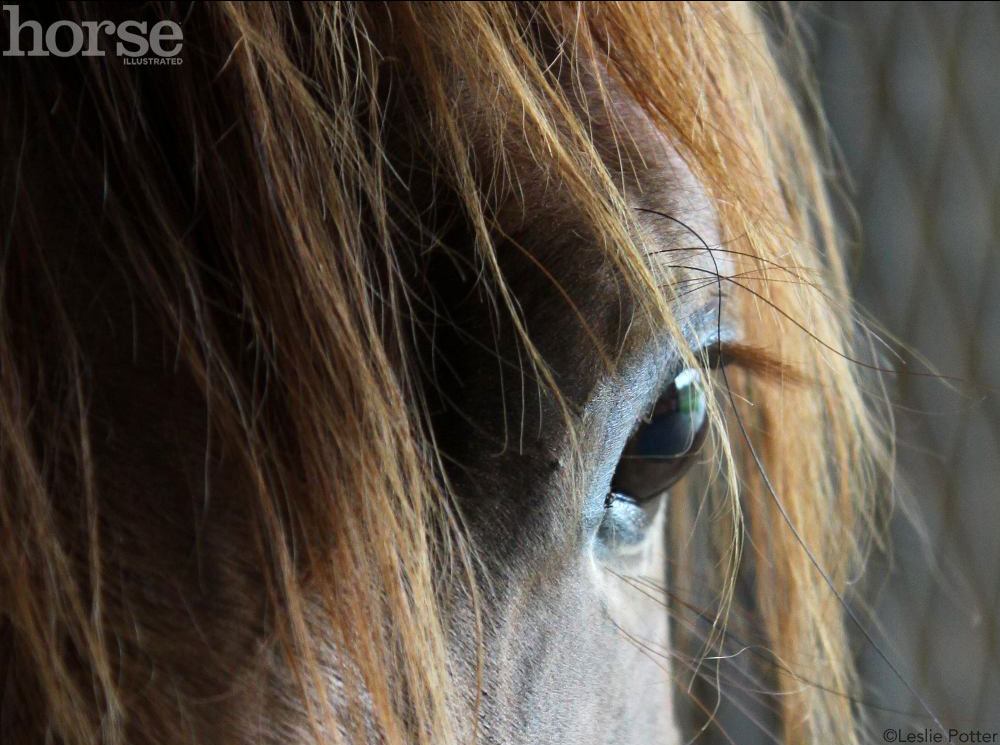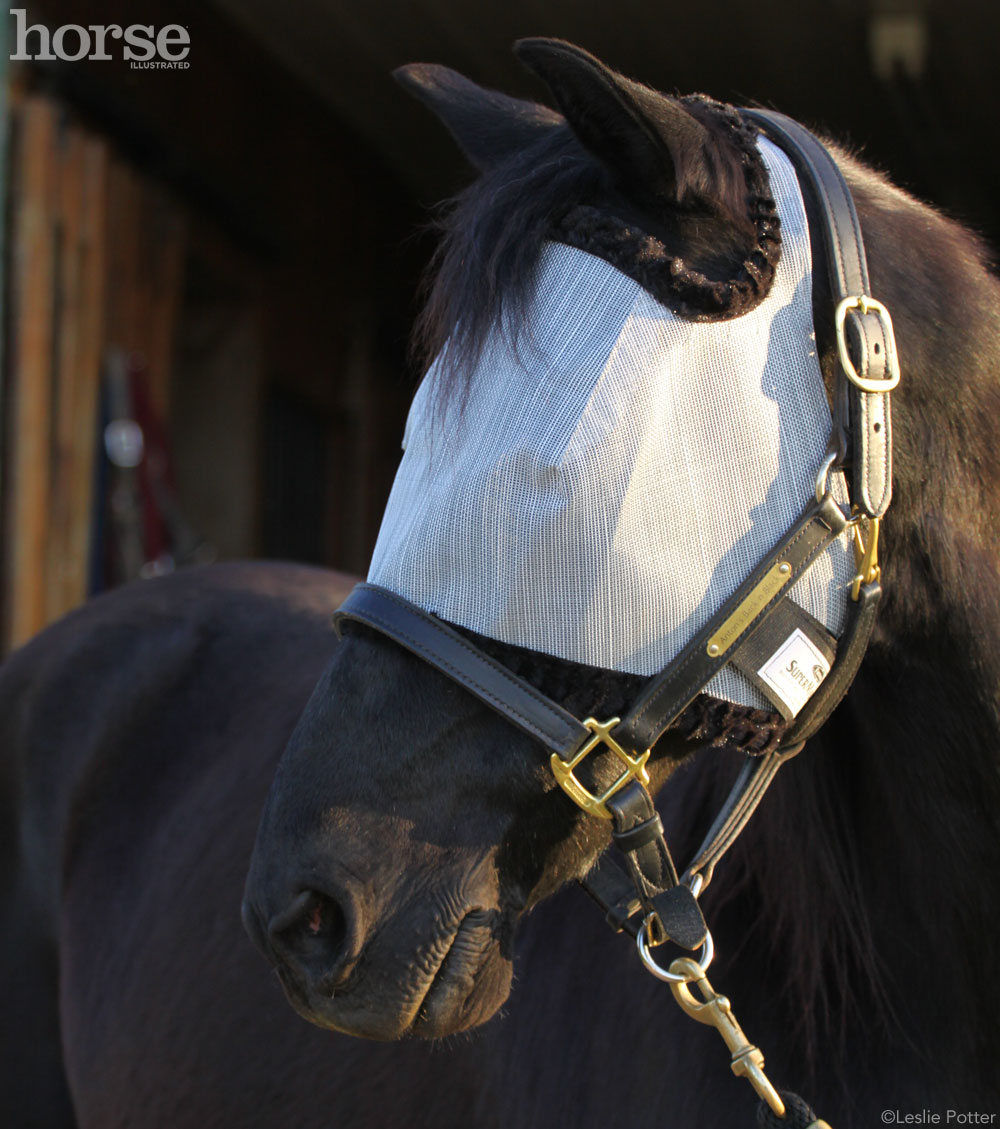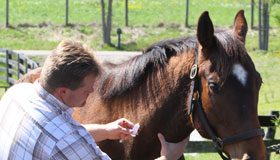
Most people assume vision problems are a given when it comes to aging. Rare is the older person who gets by without glasses or contacts. In elderly dogs, failing eyesight and even complete blindness are common.
Common eye problems in horses (but not necessarily older horses) include:
- Corneal abrasion (surface break in the cornea)
- Corneal ulcer (erosion of the cornea due to injury or foreign body)
- Cataracts (focal opacity or “cloudiness” of the lens)
- Conjunctivitis or “pink eye” (inflammation or infection of the conjunctiva, which is the membrane lining the eye)
- Squamous cell carcinoma (cancer of the eye)
- Keratitis (inflammation of the cornea)
- Uveitis (inflammation/irritation of the layer of the eye known as the uvea)
- Habronema (internal parasites)
If your horse shows any of the following signs, contact your veterinarian immediately. The situation may require simple treatment, such as application of a topical ointment, but prompt attention is important because eye problems can progress rapidly and become serious if not addressed. Watch for:
- Swelling
- Redness
- Eye held shut
- Tearing or discharge
- Squinting
- Bulging
- Cloudy or “milky” appearance
“You don’t see a lot of blind horses; I have only one in my practice. Most of the eye issues I see in older horses are the result of previous problems,” says Armon Blair, DVM, a veterinarian with Ocala Equine Hospital in Ocala, Florida.
For example, Blair has worked with horses that had bad corneal ulcers, which can leave large scars or opacities on the cornea. Another concern is when injury causes the muscle that constricts the pupil to tear or split, because that can cause a tear in the iris. This may or may not heal so that the eye again functions normally.
Cataracts cause a cloudiness or whitening of the lens. The horse usually still has vision in the eye, but of a lesser quality.
In cases where the cornea is injured due to trauma or disease, a transplant may be possible.
“Corneal transplants have become somewhat common in younger performance horses,” says Blair. “You could do it in an older horse if otherwise, the eye was functional. So often, especially with an older horse, if the eye gets bad enough, we just remove it because they do fine with one eye.”

A fly mask can help reduce risks of eye injury from insects and debris.
Because the horse has the largest eye of any land mammal, injuries are common. Many eye problems start out as the result of trauma or irritation, so anything you can do to avoid that is a benefit.
“Wearing a fly mask can help cut down on some potential dangers, such as insects, dust and grass seeds, which are all external things that can cause trauma,” says Blair.
“Vets don’t routinely conduct an in-depth ophthalmic exam as part of a yearly physical, so if you have any concerns, you should bring it to your veterinarian’s attention,” he adds.
In addition to the signs mentioned above, other indications a horse might be experiencing vision problems include stumbling on even ground, bumping into things, spooking more than normal, or acting disoriented.
Additional Resources
Video: Administering Eye Medication






Great advice. But make sure the fly mask fits properly as a badly fitting mask can cause its own eye problems.